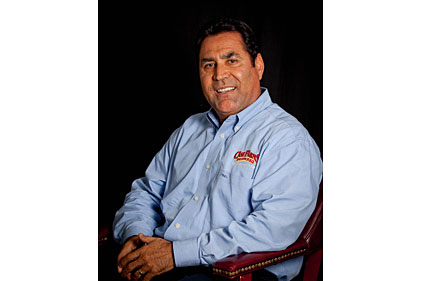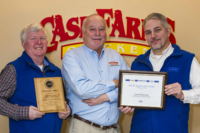Andy Hanacek, editor-in-chief of The National Provisioner, sits down with Bobby Barragan, director of human resources, Case Farms, to discuss some of the initiatives and corporate-culture changes that have occurred at his company in its quest to keep worker safety among its highest priorities. What follows is a portion of their discussion:
Hanacek: Case Farms has won recognition from AMI for its worker-safety record in recent years. When did Case Farms make the leap into committing 100 percent to keeping its workforce safe? Was there a specific turning point in the maturation of the program?
Barragan: I worked with Case Farms in the late 1990s, as a safety manager at our Morganton facility, and even then, Case took safety very seriously. What I think will take the program to the next level is our objective to create a great place to work for our employees — obviously safety is a critical component of achieving that objective.
We recommended to senior management four elements that are integral parts of achieving a strong safety and health program: (1) strong management commitment and employee involvement, (2) producing work-site analysis on a daily basis, (3) hazard prevention and control programs, and (4) giving the necessary training to our associates, supervisors and managers, giving them the necessary training that is required.
We have roughly eight safety committees at each of our locations, … and they meet once a month. All the committees are accountable to the steering committee, which is chaired by the general manager.
Hanacek: So having worked in this area of business outside of the poultry industry, is it more challenging to develop a worker-safety program within a poultry plant, or a set of poultry plants, than it is with your other experiences?
Barragan: I would say it is a little bit more challenging for poultry plants, specifically [in comparison to my other jobs], because of the education level and the history or the background of new hires. Most of the people that we hired for my other employer had previous manufacturing experience — we wouldn’t hire you unless you had one or two years manufacturing experience somewhere else. In this industry, however, we take a lot of people that have never worked in the poultry industry, and we teach them from ground zero.
Hanacek: Whether it’s practices or theories that Case is enacting now or policies that Case wants to incorporate moving forward, what are some of the things that are making the job of worker safety easier for your company?
Barragan: As we have continued to advance these four elements of our program, we put into place daily, weekly and monthly activities [that remind us of] the things that we need to do regularly to make sure we have a vibrant safety program. We developed daily checklists, where we check each area — kind of a pre-op check of the area — and, of course, address those deficiencies as quickly as possible. Then we review our trends on a weekly basis and discuss them with senior management at that location to ensure awareness of the deficiencies and that they are addressed. Then, the last part is monthly activities, which include random safety inspections on a rotating basis. So you inspect the plant this month, next month the feed mill, next month the hatchery, garage the next month, etc., and then you come back around and do the plant again. Also, about three years ago, we began corporate safety inspections, where we gather all the safety managers and inspect one division. We do a comprehensive safety audit, and that has worked really well for us.
Hanacek: How challenging has it been to get the corporate culture to change amongst the employees at each facility?
Barragan: You can’t do it unless your employees buy in. It’s the old saying, “You can take a horse to water, but you can’t make him drink.” It really takes employees buying in to what you’re trying to do. We’re making good strides at our other locations, but I think at our Goldsboro facility, the people that we have driving the program have really gotten our employees to buy in to the program.




Report Abusive Comment